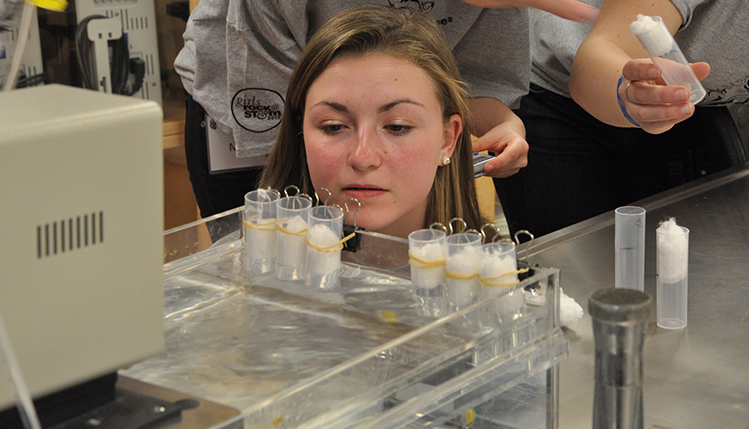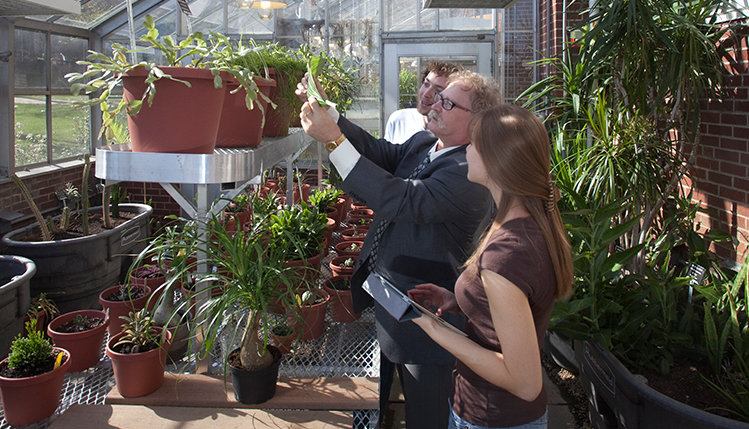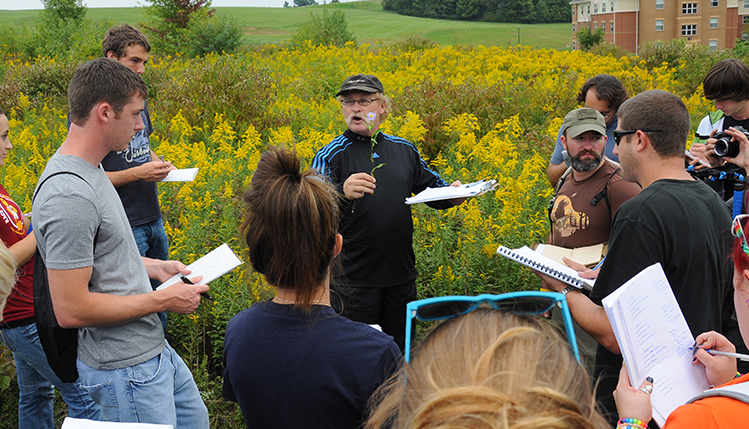Biology Facilities
Maintaining top-rated labs and research facilities is part of the Department of Biology's commitment to providing a comprehensive, hands-on biology education. Students in biology have access to modern laboratory equipment in teaching and research labs, including a number of outdoor laboratory spaces for those interested in field research.
Unlike many larger universities, the facilities at Slippery Rock University are available to undergraduates in courses and research. Undergraduate students have access to:
- Teaching & Research Laboratories
- Microscopy Facilities
- Growth Chambers & Greenhouse
- Digital & High Precision Measurement Systems
- Outdoor Study Spaces
- Herbarium
Any students interested in using one of the department's facilities should contact the Department Chair Dr. Stacy Hrizo.
Teaching & Research Laboratories
Teaching laboratories oftentimes double as research laboratories. These well-equipped facilities are designed for student use and include equipment such as table top unltracentrifuges, uv-vis spectrophotometers, incubators, water baths, gene sequencer, thermocyclers, microcentrifuges, lyophilizer, anaerobic chamber, incubators, autoclaves, oscillating arm shakers, spirometers, pressure chambers, drying ovens, flame photometers, and respirometry systems.
Microscopy Facilities
Each of the laboratories includes a complement of dissecting and stereomicroscopes. Both an Olympus AX-70 with bright field, dark field, epifluorescence, Nomarski differential interference contrast, and phase contrast modes and Olympus Scanning Laser Confocal microscope with bright field, epifluorescence, and Nomarski differential interference contrast modes are equipped with photomicrography/video recording capabilities are available for student use following training. A cryostage, which allows direct observation of microscopic preparations during regulated cooling and heating, is also available in the department.
Growth Chambers & Greenhouse
The Department has three reach-in programmable floor model growth chambers. Temperature, humidity, and illumination are controllable. Housed within the same complex are four mobile bench top units. Lighting and temperature to a lesser degree are controlled in these units. These chambers are used in both teaching and research. The greenhouse is separated into three rooms, one housing cacti and succulents, another with tropical plants, and the third is used for experimentation.
Digital & High precision Measurement Systems
A digital video camera and Olympus SZ61 stereomicroscope and SPOT IDEA camera, computer interfaced data acquisition systems (e.g. PowerLabs), NanoDrop spectrophotometer and laptop interface, respirometry and spirometry systems, and digital transfer systems are available for student use.
Outdoor Study Spaces
Biology students and faculty use a number of outdoor habitat study areas. Some of these areas are owned and maintained by SRU. Some outdoor labs used by the department include:
- On-campus Ecology Study Plots
- Miller Nature Tract
- Jennings Environmental Education Center
- McKeever Environmental Learning Center
- Moraine State Park
- Presque Isle State Park
- Pymatuning Laboratory of Ecology (University of Pittsburgh) - summer course program participating institution - for more information see https://www.biology.pitt.edu/facilities/pymatuning
Herbarium
The Department maintains a unique resource with the Slippery Rock University Herbarium (SLRO). Founded in 1930, the herbarium houses over 18,000 plant specimens. Approximately half of these specimens originate from Pennsylvania with the remainder coming from other parts of North America.


